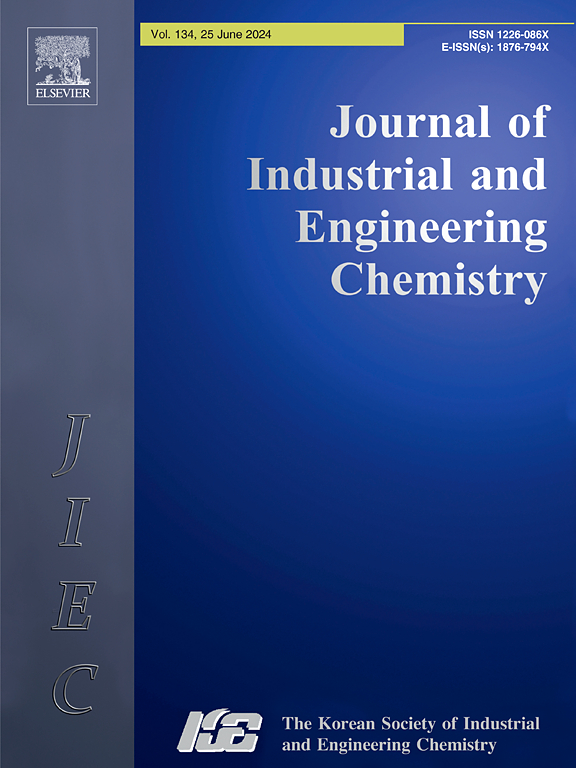Electrolytic reduction in LiCl-Li2O of titania microspheres synthesized via vibrational droplet coagulation: Effect of feed morphology
IF 5.9
3区 工程技术
Q1 CHEMISTRY, MULTIDISCIPLINARY
Journal of Industrial and Engineering Chemistry
Pub Date : 2025-01-25
DOI:10.1016/j.jiec.2024.06.022
引用次数: 0
Abstract
In this work, an electrolytic reduction route of TiO2 microspheres with a well-defined morphology is reported. The TiO2 microspheres are synthesized via a vibrational droplet coagulation method and are electrochemically reduced in LiCl-Li2O molten salt. The reduction process of the spheres of different size and morphology is investigated. The electrolytic reduction kinetics, the product chemistry and morphological parameters such as outer diameter, total surface area and pore size are investigated and benchmarked to a conventional TiO2 powder feed. Moreover, the reduced TiO2 spheres were investigated by X-ray diffraction, scanning electron microscope and BET method. A core–shell structure was observed in the spheres as an intermediate form during electrolysis when charges below 100 % of the theoretical charge were applied. Raman spectroscopy was performed to identify the composition of the core and the shell to further elucidate the reduction pathway of these TiO2 spheres throughout the electrolysis process. After full electrolytic conversion of the feed material, LiTiO2 microspheres were obtained. The presented reduction route provides a novel pathway to synthesize high purity LiTiO2 for practical applications.
振动液滴混凝法制备二氧化钛微球的LiCl-Li2O电解还原:原料形态的影响
在这项工作中,报告了具有明确形态的TiO2微球的电解还原路线。采用振动液滴混凝法制备TiO2微球,并在LiCl-Li2O熔盐中进行电化学还原。研究了不同尺寸和形态的球的还原过程。研究了电解还原动力学、产物化学和形貌参数(如外径、总表面积和孔径),并以常规TiO2粉料为基准。并用x射线衍射、扫描电镜和BET法对TiO2还原球进行了表征。在电解过程中,当施加低于理论电荷100%的电荷时,在球体中观察到核壳结构作为中间形式。通过拉曼光谱分析鉴定了核和壳的组成,进一步阐明了这些TiO2球在电解过程中的还原途径。原料经充分电解转化后,得到了二氧化钛微球。所提出的还原路线为实际应用提供了一条合成高纯氧化锂的新途径。
本文章由计算机程序翻译,如有差异,请以英文原文为准。
求助全文
约1分钟内获得全文
求助全文
来源期刊
CiteScore
10.40
自引率
6.60%
发文量
639
审稿时长
29 days
期刊介绍:
Journal of Industrial and Engineering Chemistry is published monthly in English by the Korean Society of Industrial and Engineering Chemistry. JIEC brings together multidisciplinary interests in one journal and is to disseminate information on all aspects of research and development in industrial and engineering chemistry. Contributions in the form of research articles, short communications, notes and reviews are considered for publication. The editors welcome original contributions that have not been and are not to be published elsewhere. Instruction to authors and a manuscript submissions form are printed at the end of each issue. Bulk reprints of individual articles can be ordered. This publication is partially supported by Korea Research Foundation and the Korean Federation of Science and Technology Societies.

 求助内容:
求助内容: 应助结果提醒方式:
应助结果提醒方式:


